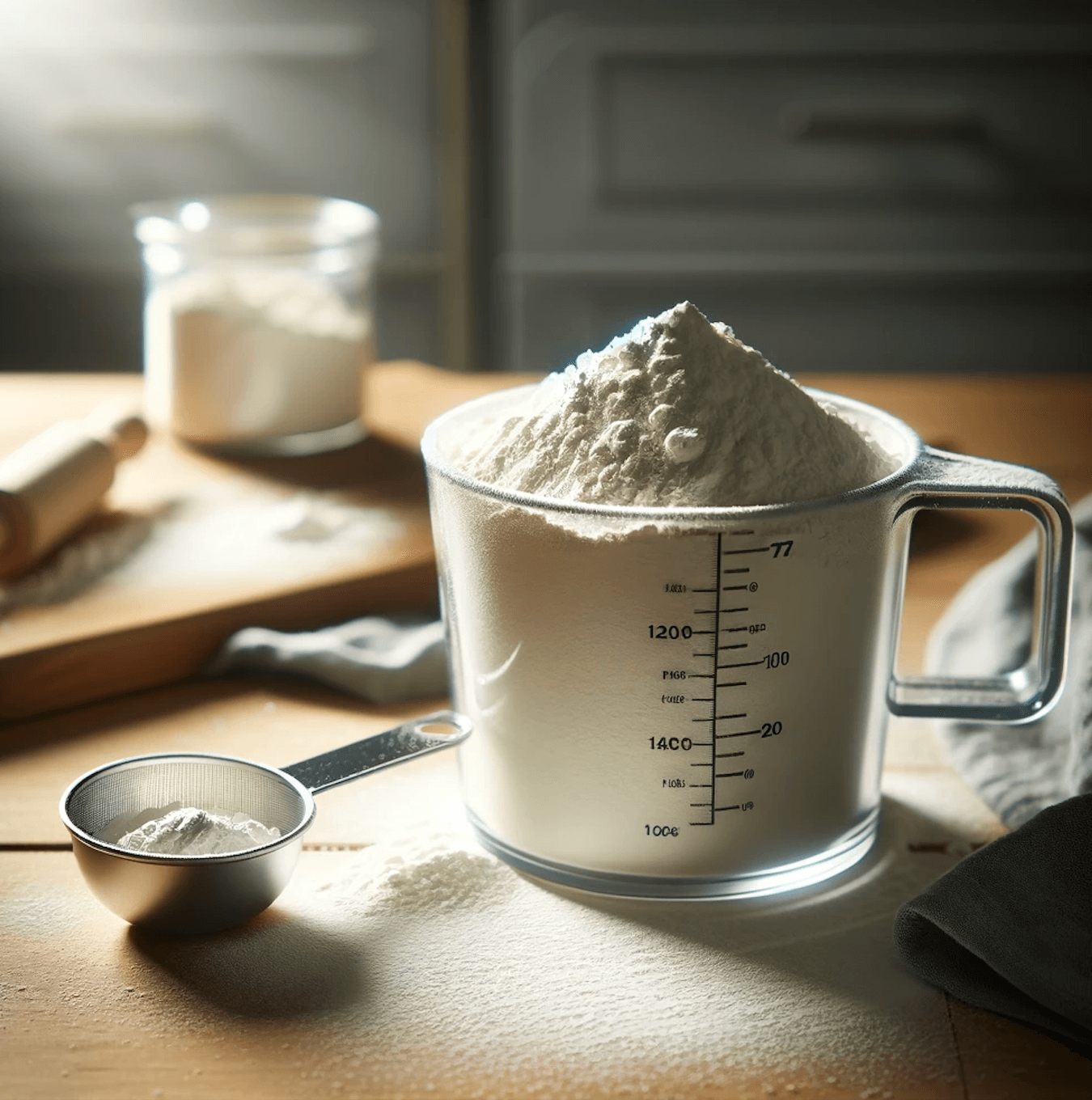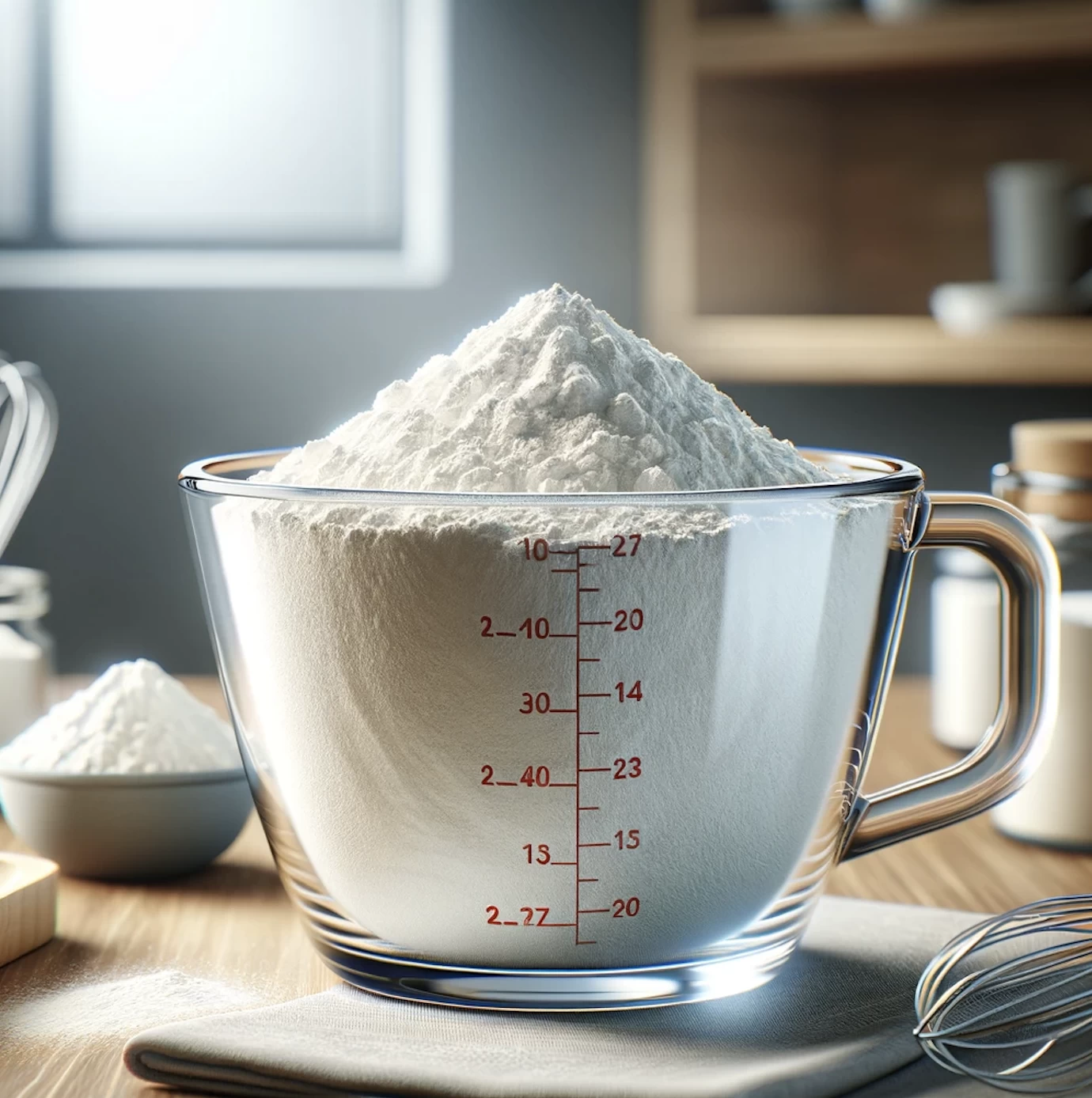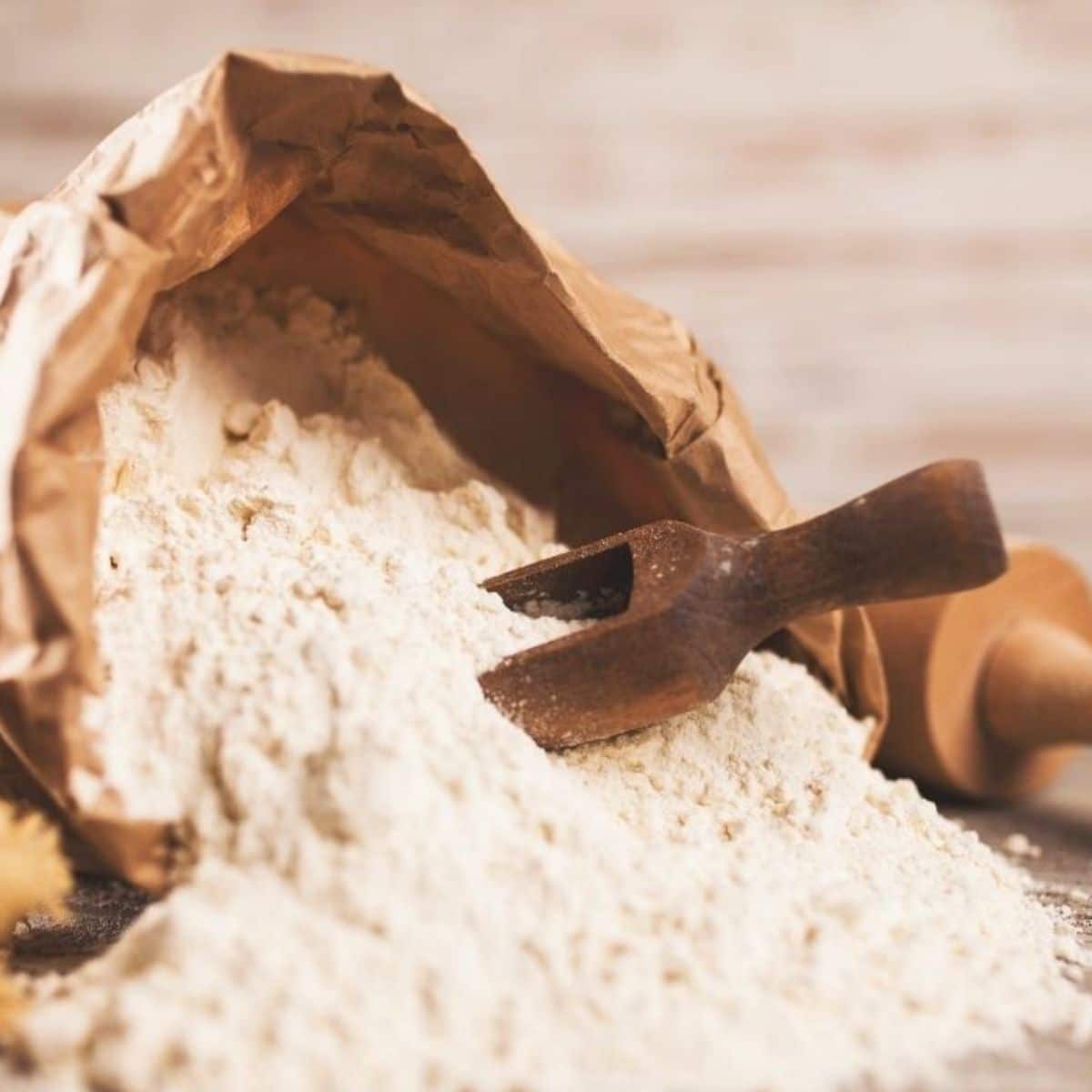300g Flour Cups - Getting Your Bake Just Right
When you're trying to whip up something delicious in the kitchen, like a batch of cookies or a fluffy cake, getting your ingredients just right makes a real difference. One common spot where things can get a little fuzzy, so it's almost, is with flour measurements. You see a recipe call for a certain amount, perhaps in grams, and then you look at your trusty measuring cups, and a question pops up: how do those two things connect, especially when you're talking about something like 300g of flour?
It turns out that measuring flour by volume, like with cups, can be a bit of a guessing game, you know? The way you scoop it, whether it's packed down or light and airy, can actually change how much flour you're really getting. This can lead to a lot of confusion, particularly when a recipe gives you a precise weight, like 300g. It's a pretty common kitchen puzzle, actually, that home bakers often face.
This whole thing matters because the right amount of flour is pretty much the backbone of many recipes. Too much, and your bake might end up dry and tough; too little, and it could be flat or crumbly. So, figuring out how to handle that 300g flour cups situation is a pretty good skill to pick up if you want your kitchen creations to turn out consistently wonderful, as a matter of fact.
- Unveiling The Life Of Knox Leon Jolie Pitt A Glimpse Into The Star Childs World
- Unveiling The World Of Dylan Bratz The Iconic Doll That Redefined Fashion
- Nimona 2 The Next Chapter In A Bold Adventure
- Unveiling Marlon Jacksons Date Of Birth A Journey Through Time
- Exploring The Life And Legacy Of Isabella Damon
Table of Contents
- What's the Big Deal with 300g Flour Cups?
- Why 300g Flour Cups Can Be Tricky
- How Do You Really Measure 300g Flour Cups?
- Tools for Spot-On 300g Flour Cups
- Are There Different Kinds of 300g Flour Cups?
- What Happens If Your 300g Flour Cups Are Off?
- Tips for Consistent 300g Flour Cups
- Common Mistakes with 300g Flour Cups to Avoid
What's the Big Deal with 300g Flour Cups?
You might wonder why bakers often talk about grams instead of just using cups, you know? Well, it all comes down to precision. A gram is a set amount, a unit of weight that doesn't change. A cup, on the other hand, is a unit of volume, and that volume can hold different amounts of something depending on how you fill it. This is why getting your 300g flour cups right is a pretty big deal for baking success.
Think about it: if you scoop flour directly from the bag with your measuring cup, you're probably packing it down a little, right? That means you're getting more flour into that cup than if you were to spoon it lightly into the cup and then level it off. This tiny difference can actually add up, making your 300g flour cups either too heavy or too light, which can mess with the final texture of your baked goods. It's a pretty subtle thing, but it has a real impact.
For something like bread, where the ratio of flour to liquid is super important for how the dough comes together, having accurate 300g flour cups can be the difference between a chewy loaf and a dense brick. It's also true for delicate things like pastries or cakes, where a slight change in the dry ingredients can alter the crumb structure. So, yeah, it's pretty much about consistency and getting the outcome you want every single time, basically.
- Tate Mcrae The Rising Star Of Pop Music
- Unveiling The Life And Career Of Travis Van Winkle
- Exploring The Timeless Appeal Of Keith Sweats Deep Is Your Love
- Lee Majors The Iconic Actor Who Defined A Generation
- Exploring The Life Of Outlander Jamie Actor Sam Heughan
Why 300g Flour Cups Can Be Tricky
There are a few reasons why trying to figure out 300g flour cups can feel like a puzzle. One big one is that different kinds of flour have different densities. All-purpose flour, bread flour, cake flour – they all weigh a little differently per cup, even if they look like the same amount. So, what might be one cup of all-purpose flour might not be the same weight as one cup of cake flour, you know? This makes a standard conversion for 300g flour cups a bit of a moving target.
Another thing that can throw off your 300g flour cups measurement is how much air is in the flour. If flour has been sitting for a while, it might be more compacted. If you just sifted it, it'll be much lighter and fluffier. This means that a cup of sifted flour will weigh less than a cup of unsifted flour, even though it fills the same volume. It's something to think about, actually, when you're trying to be precise.
Even humidity in the air can affect how much your flour weighs. Flour absorbs moisture, so on a really damp day, your flour might be a tiny bit heavier than on a dry day. These are small things, but when you're aiming for exact 300g flour cups, they can add up and change the outcome of your recipe. It's why many professional bakers, and even a lot of home bakers who are serious about their craft, prefer to weigh their ingredients, really.
How Do You Really Measure 300g Flour Cups?
So, if you're trying to hit that 300g mark for your flour, what's the best way to go about it when you're used to cups? The simplest and most reliable way, you know, is to use a kitchen scale. This takes all the guesswork out of it. You put your bowl on the scale, zero it out, and then you just spoon in flour until the display reads 300g. It's pretty straightforward, and it ensures you get the exact amount every time, which is very helpful.
If you don't have a scale, and you're stuck with just measuring cups, there's a method that helps get you closer to the right weight. It's called the "spoon and level" method. You gently spoon the flour from its container into your measuring cup until it overflows a little. Then, you use the back of a straight edge, like a knife or a ruler, to level off the top. You don't want to pack it down or tap the cup, because that just adds more flour, you know? This way, you're aiming for a lighter, more consistent measure for your 300g flour cups.
It's important to remember that even with the spoon and level method, you might not get exactly 300g. It's an approximation, but it's much better than just scooping. For most home baking, it's usually good enough, but for recipes where precision is super important, a scale is definitely the way to go. It just makes things so much easier and more predictable, as a matter of fact.
Tools for Spot-On 300g Flour Cups
To get your 300g flour cups as accurate as possible, a few tools can really come in handy. The first, and most recommended, is a digital kitchen scale. These are not too expensive these days, and they make a huge difference in your baking. They let you measure ingredients by weight, which is far more precise than measuring by volume. You just set your bowl on it, hit the tare button to zero it out, and add your flour until you reach 300g. It's pretty simple, actually.
Beyond the scale, having a good set of measuring cups and spoons is still useful, especially for other ingredients. For flour, specifically, using a flat edge like a butter knife or a straight spatula to level off the top of your measuring cup is important if you're using the spoon and level method. This helps you get a consistent amount of flour in your 300g flour cups each time. It's a small detail, but it makes a difference, you know?
Some people also like to use a flour scoop, which is different from a regular measuring cup. These scoops are designed to gently transfer flour without compacting it too much, which can help when you're trying to get a lighter, more accurate measure before leveling. While not strictly necessary for getting 300g flour cups, it can be a nice addition to your kitchen gadgets if you bake a lot, basically.
Are There Different Kinds of 300g Flour Cups?
When we talk about "300g flour cups," we're really talking about the weight of the flour, not the type of cup itself, you know? However, the type of flour you're measuring will definitely affect how many cups it takes to reach 300g. Different flours have different densities, meaning some are lighter or heavier for the same volume. This is why a simple "one size fits all" conversion for 300g flour cups isn't really a thing.
For instance, cake flour is usually milled more finely and is lighter than all-purpose flour. So, it would take more cups of cake flour to reach 300g than it would for all-purpose flour. On the other hand, bread flour often has a higher protein content and can be a bit denser, meaning it might take slightly fewer cups to hit that 300g mark. It's a subtle difference, but one that bakers who are after very specific results often consider, apparently.
Then there are whole wheat flours, which are typically denser than white flours because they contain the bran and germ of the wheat berry. This means that 300g of whole wheat flour will likely take up less volume, or fewer cups, than 300g of all-purpose flour. So, when a recipe calls for 300g of flour, it's always good to know what kind of flour they mean, because it changes how you approach those 300g flour cups, in a way.
What Happens If Your 300g Flour Cups Are Off?
If your 300g flour cups are a bit off, meaning you have too much or too little flour, it can change your baked goods in ways you might not expect. If you add too much flour, your dough or batter will be stiffer and drier. For cookies, this might mean they don't spread out as much and end up thick and crumbly. For cakes, you might get a dense, dry crumb instead of something light and fluffy. It's a common issue, actually, that can be a bit frustrating.
On the flip side, if your 300g flour cups contain too little flour, your mixture will be too wet. This can cause cookies to spread too much and become flat and greasy. Cakes might sink in the middle or have a very weak structure that falls apart easily. Bread dough might be too sticky to handle and won't develop proper gluten. So, you see, getting those 300g flour cups reasonably accurate really does matter for the final product, you know?
Sometimes, if you're just a little bit off, you might not notice a huge difference, especially in forgiving recipes. But for more delicate or precise baking, like making macarons or certain types of bread, even a small error in your 300g flour cups can lead to a noticeable problem. That's why many bakers really emphasize weighing flour for consistency and better results, basically, to avoid those kinds of surprises.
Tips for Consistent 300g Flour Cups
To get your 300g flour cups as consistent as possible, especially if you're relying on volume measurements, there are a few good habits to pick up. Always fluff your flour before you measure it. This means stirring it gently with a spoon or whisk in its container to loosen it up. Flour tends to settle and compact, so fluffing it helps to ensure you're getting a lighter, more consistent measure when you scoop it, you know?
After fluffing, use the spoon and level method we talked about earlier. Don't scoop directly from the bag with your measuring cup, as that packs the flour down. Instead, spoon the flour into the cup until it's overflowing, then use a straight edge to sweep off the excess. This helps prevent over-measuring, which is a common reason why 300g flour cups might end up heavier than intended. It's a simple step, but pretty effective, actually.
If a recipe gives measurements in both cups and grams, always go with the grams if you have a scale. It's just more precise and takes out all the guesswork. If you don't have a scale, and you're trying to convert 300g flour cups, look up a reliable conversion chart for the specific type of flour you're using. Remember, conversions can vary a bit, so finding one that matches your flour type will give you the best shot at accuracy, in a way.
Common Mistakes with 300g Flour Cups to Avoid
One very common mistake when dealing with 300g flour cups is scooping the flour directly from the container with the measuring cup. This action compacts the flour, meaning you're getting a lot more than you intend. It's like trying to fit too many clothes into a suitcase; you push them down, and suddenly, you have more than you thought. This can easily lead to a much heavier measurement than 300g, which can mess up your recipe, you know?
Another thing to steer clear of is tapping the measuring cup on the counter or shaking it to settle the flour. Just like scooping, this action also packs the flour down, adding more weight to your measurement. The goal for accurate 300g flour cups, when using volume, is to keep the flour as light and airy as possible. So, once you've spooned it in and leveled it, just leave it be, basically.
Finally, not considering the type of flour is a mistake that can throw off your 300g flour cups. As we discussed, different flours have different densities. Using a conversion meant for all-purpose flour when you're actually using cake flour will lead to an inaccurate measure. Always try to match your conversion method or your weighing approach to the specific flour type called for in your recipe. It's a small detail, but pretty important for consistent results, apparently.
- Exploring The Life Of Outlander Jamie Actor Sam Heughan
- Exploring The Timeless Elegance Of Walk On By By Dionne Warwick
- Why Heineken De Botella De Vidrio Sabe Mejor An Indepth Exploration
- Exploring The Legacy Of The Iran Mens National Soccer Team
- Unveiling The Charismatic Journey Of Steve Harvey

600 grams of flour in cups - Flour Grams to Cups Conversion

350 grams of flour in cups - Flour Grams to Cups Conversion

How Many Cups In A Pound of Flour? (& How To Measure Correctly!)